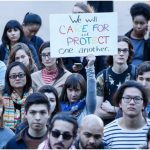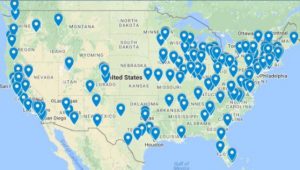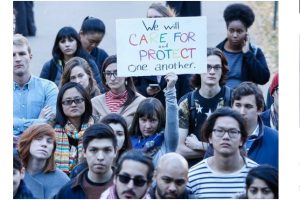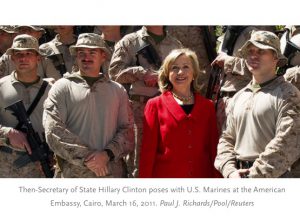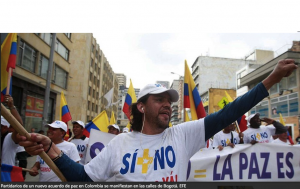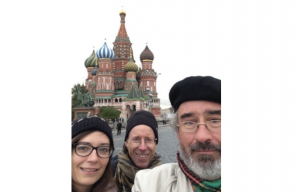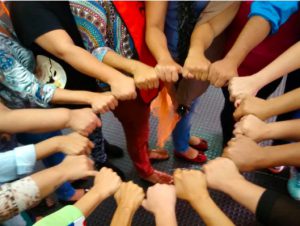Here is a
blog by Mazin Qumsiyeh that responds to this question.
1- Palestine is the Western part of the Fertile Crescent: an area that includes Palestine, Jordan, Lebanon, Syria, and Iraq. In this Fertile Crescent the first human agriculture developed. Here the first domestication of animals (e.g. goats, donkeys, camels) and plants (e.g. wheat, barley, chickpeas, lentils, olives) happened.
2- This is also where civilization began including development of the first alphabet (by Phoenician Canaanites) and the first laws. It was where we first developed sciences like astronomy, engineering, and mathematics
3- The original inhabitants of the Western part of the Fertile Crescent were called Canaanites and the original language was called Aramaic which Jesus spoke (he was born in the country called then Palestine and thus he was Palestinian)
4- The old Aramaic language gave rise to derived languages including Syriac, Arabic, and Hebrew and this language group is called Semetic languages
5- Arabic alphabet evolved in Southern Canaan (today’s Jordan and Palestine) while the Latin alphabet evolved in Northern Canaan (Phoenicia, present day Lebanon and Syria). The Alphabet used in Europe today came from our part of the world.
6- The people of Southern Canaan including Palestine endured many invasions of armies with nearly 15 times that local people were ruled by kings or emperors (Persian, Roman, Umayyad, Abbasid, Israelite etc).
7- Local religious ideas evolved over the ages from Cananitic Pagan ideas to monotheistic ideas to Christianity (first century), Rabbinical Judaism (3rd century), Islam (7th Century).,
8- Palestine was always multi-cultural, multi-religious society despite attempts to homogenize it in certain periods (e.g. the Crusaders killed and exiled Jews, Muslims, and Christians of other sects).
9- Jews of today, like Christians and Muslims of today come from various ethnic and cultural backgrounds. They are thus genetically (biologically) heterogeneous.
10- Before the wave of European Jewish immigration, Palestinians were of various religions: about 85% Muslim, 10% Christian, 5% Jewish and others. For hundreds of years Palestinians of various religions lived in relative harmony.
11- Zionism is a political idea that spread among a minority of European Jews who adapted to the European notions of ethnocentric nationalism and thus claims Jews of today should gather in Palestine and create a Jewish state because of discrimination in Europe. Socialist Jews and other Jews believed in fighting for equal rights. Zionists thought that anti-Jewish feelings in Europe serves their interests and thus even collaborated with racists. There was a transfer agreement between the third Reich and the Zionist movement. Zionists also lobbied Western governments not to take in European Jewish refugees so that they all go to Palestine.
12- Zionism started in the mid 19th century with formation of the “Jewish Colonization Association” and became an international movement in 1897 at the first World Zionist Congress. To achieve its goals, its leaders advocated transferring the native non-Jewish Palestinians.
13- The United States and other Western countries under influence of a Zionist lobby pushed for the creation of a “Jewish state” of Israel in Palestine despite the wishes of the native people.
14- Between 1947-1949, 530 Palestinian villages and towns were completely destroyed and their people made refugees. This process of forcing Palestinians out of their land continued in other forms since the founding of Israel in May 1948. Today 70% of the 11 million Palestinians in the world are refugees or displaced people.
15- Current day Israel has a set of discriminatory laws that fit the descriptions given in the International Convention on the Suppression and Punishment of the Crime of Apartheid. Every month, the Israeli Knesset takes on more such racist laws.
16- In 1967, Israel occupied the West Bank (including the old city of Jerusalem) and Gaza strip. Together these two areas are 22% of historic Palestine. Israel began immediately to build Jewish colonial settlements in these Palestinian lands. Contrary to International law, there are now over 200 settlements on our lands housing over 0.5 million Jewish colonial settlers.
17- Israel has built walls around the remaining Palestinian enclaves (ghettos, people warehouses, cantons, reservations) and isolated them from each other and from the rest of Palestine. These walls separate Palestinians from their lands, from other Palestinians, from schools, from hospitals etc. As an example, the Bethlehem district houses 180,000 natives, some 50,000 of us living there are refugees from 1948 period. All of us are restricted now to develop and live on only 13% of the original Bethlehem district size. 87% of the district is now under control of Israeli settlements, military bases, closed military zones etc. The Bethlehem people are isolated behind a wall and even Jerusalem (6 km away) is off-limits to us.
18- Colonialism involves violence. Over 80 massacres were committed against native Palestinians. Over 60,000 Palestinian civilians were killed by Israeli forces and settlers. This is ten times more than the number of Israeli civilians (most colonial settlers) killed by Palestinians. Palestinians resisted colonialism over the past 130 years mostly by using non-violent popular resistance something not widely discussed in the Western countries because of attempts to vilify the victims.
19- Palestinians and other Arab countries in conflict with Zionism have been “unreasonably reasonable” as one diplomat described it. We accept all elements of International law` and all UN (United Nations) resolutions on the issue. Israel by contrast, violated over 60 UN Security Council resolutions and over 200 UN General Assembly Resolutions. Without the USA using its veto power to shield Israel from International law at the UN SC, the number would have been doubled.
20- We Palestinians demand and are struggling for our right to return and to self-determination. We call for a democratic pluralistic state for people of all religions in our historic homeland of Palestine. We call for equality and justice. People in Europe and around the world can support us by using education, by coming to visit us, and by Boycotts, Divestments, and Sanctions (BDS). This is a collective human struggle similar to what happened in challenging apartheid in South Africa.
There are` many books and references available to document each point.
* * * * * * * * * *
Related discussion may be found under the following questions:
How can a culture of peace be established in the Middle East?
Israel/Palestine, is the situation like South Africa?, Would a Truth and Reconciliation Commission help?
How can war crimes be documented, stopped, punished and prevented?
